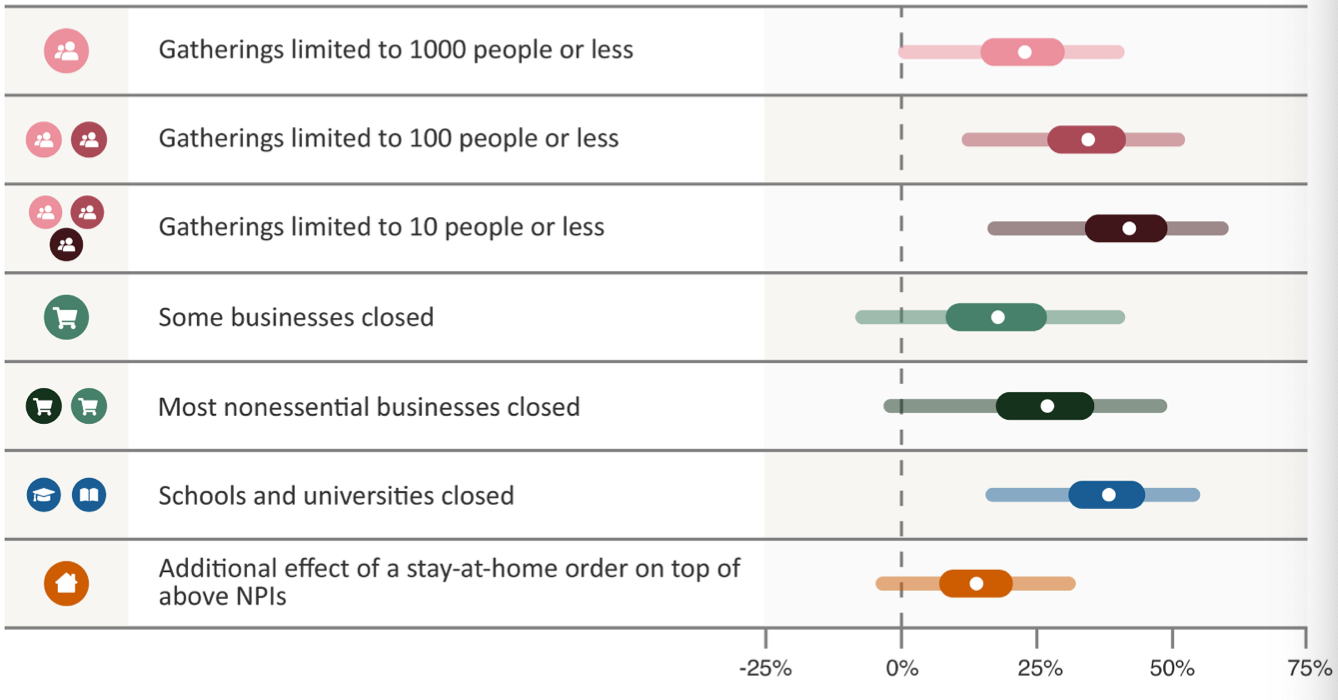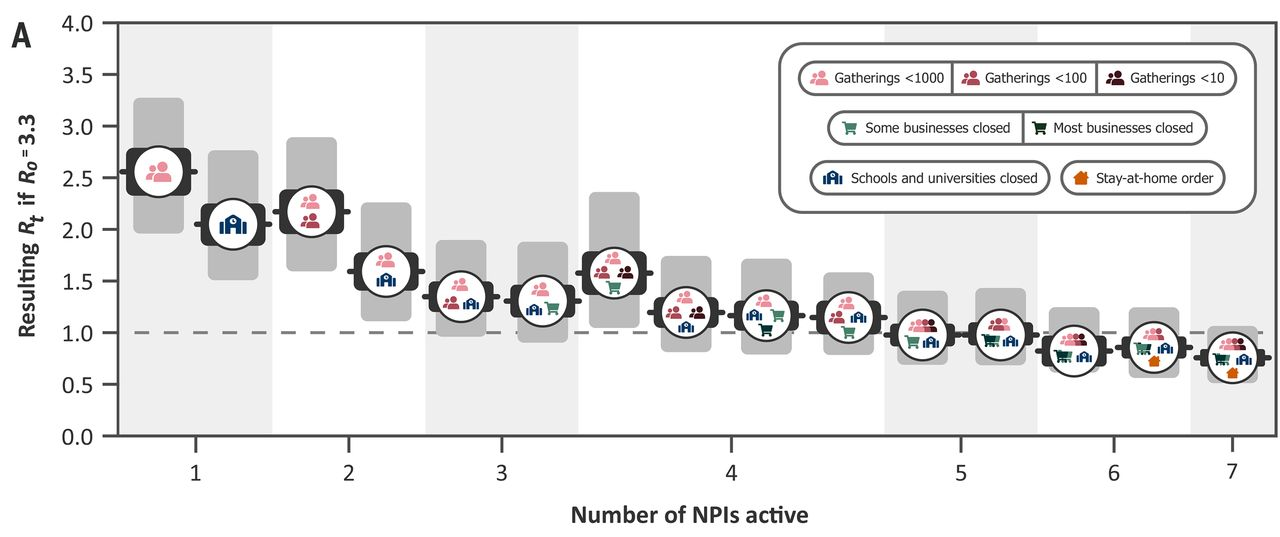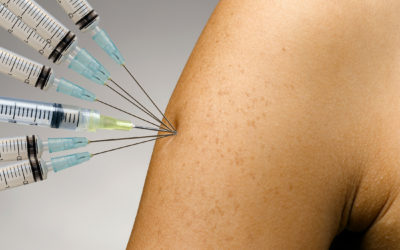The Government Measures Most Effective At Limiting COVID Spread
December 28, 2020
- A study analyzed the most effective interventions at lowering the spread of COVID
- Closing all educational institutions, limiting gatherings to 10 people or less, and closing face-to-face businesses each reduced COVID transmission considerably. The additional effect of stay-at-home orders was comparatively small.
Most countries have implemented lockdown interventions this holiday season to halt the spread of COVID. This article will analyze the effectiveness of certain lockdown interventions. The analysis is sourced from a study that measured the effectiveness of lockdown measures (ie. closing all educational institutions, limiting gatherings to 10 people or less, etc). Data was collected from 41 countries during January – May 2020. The premise of the study was to see whether or not individual lockdown policies were able to lower the reproduction number, Rt, over time.
To read the preceding article about which countries were most impacted economically, check out LifeScite’s Debunked: Economic Implications of COVID Lockdowns.
What is Reproduction Number (Rt)?
Rt measures how many people get infected from the spread of the virus. For example, if Rt is 4.0, then one infected person will spead the virus to 4 other people (see image below). The goal is to get Rt lower than 1.0, which would mean that each infected person spreads the virus to less than one other person. This is how the spread of a virus is stopped. For comparable purposes, the COVID Rt number in the US is approximately 1.01. Click HERE to see estimates of Rt in each state.

Most Effective Measure: Limiting Gatherings
The effectiveness of each lockdown measure was expressed as a percentage reduction in Rt (see image below). The % reduction in Rt for each measure was:
- Limiting gatherings to 1,000 or less: 23%
- Limiting gatherings to 100 or less: 34%
- Limiting gatherings to 10 people or less: 42%
- Closing high risk face-to-face businesses: 18%
- Closing non-essential face-to-face businesses: 27%
- Closing schools & universities: 38%
- Stay at home order: 13%

The results show that limiting gatherings and closing of businesses were effective interventions at reducing virus transmission. It might be thought that closing all non-essential businesses might be more effective than targeted closures, but the results show that they were only slightly more effective.
In fact, targeted closures like those with a high infection risk (ie. bars and restaurants) might be a more promising option in some cases.
Limited gathering to a maximum of 10 people was the most effective number, versus 100 or 1000 people. However, it is important to note that the data used in this study was collected during a time (Jan-May) where gatherings were likely already indoors because of the weather. The study also found that closing schools and universities in conjunction had a robust effect though their individual effects were not distinguishable since they closed around the same time.
Bottom line: The most effective lockdown intervention was limiting gatherings to 10 people or fewer. The least effective lockdown intervention was stay-at-home orders.
Combining Lockdown Interventions Lowered Rt by 77%
The effectiveness of lockdown policy combinations was also evaluated and found to have a 77% reduction in Rt.
Across all countries studied, the mean Rt without any measures was 3.3. Starting from this number, the estimated Rt likely could have been brought below 1.0 by implementing at least 3 lockdown policies: closing schools and universities, high-risk businesses, and limiting gathering sizes to at most 10.

Bottom Line: Implementing a combination of the 3 most effective lockdown interventions could lower Rt below 1.0. These are limiting gatherings to less than 10 people, closing all schools & universities and closing high-risk non-essential businesses (ie. bars, restaurants, gyms).
Although, the results provide us with certain insights on the effectiveness of several lockdown measures on COVID transmission, there are limitations to this study:
- The effectiveness of the measures studied depends on the context of their implementation (ie. implementation of other interventions, the countries’ demographics etc)
- The study did not take into consideration certain interventions with already promising results (ie. testing, tracing and case isolation)
- Rt may have been reduced by behavioural changes and unobserved interventions such as wearing masks
Lowering Rt can be achieved through the implementation of at least 3 measures. The most effective interventions to minimize the spread of COVID are limiting gatherings to less than 10 people, closing all schools & universities and high-risk non-essential businesses.


